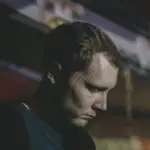From brawling over stolen corpses to rioting over a pile of exploding disco records, history's weirdest riots prove that some people can always be relied upon to form an angry mob.
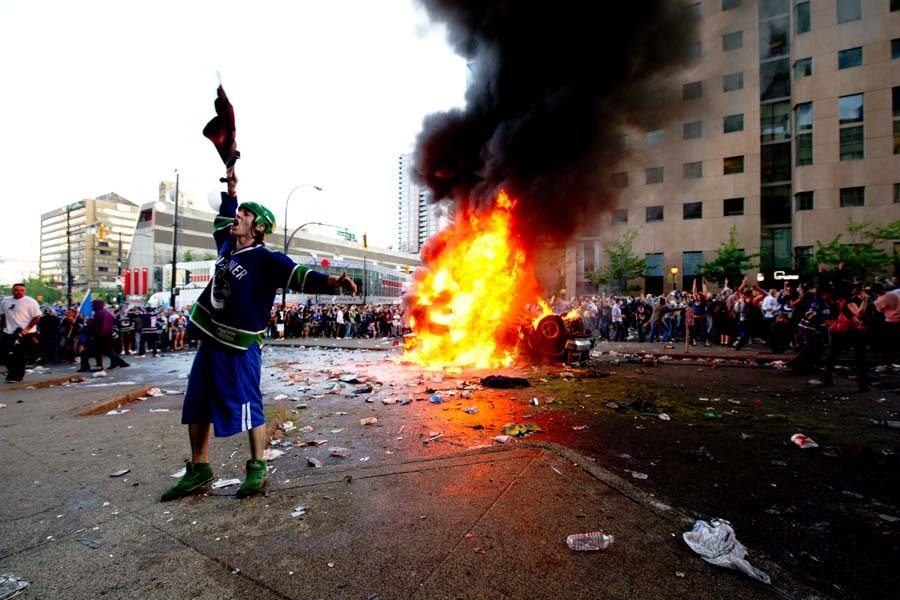
A Vancouver Canucks fan takes part in a riot after the team’s 2011 Stanley Cup Championship loss. Photo by David Elop.
Both mobs and mob mentality have been around for as long as “society” has existed. The first recorded riot occurred in 44 BC, after the assassination of Julius Caesar, but you can be certain that they were already a well-established part of human life by that point.
While violence is never a laughing matter, the motives behind some riots are just plain bizarre. Ever heard the expression, “People have rioted over less?” Here are five riots that make you realize it’s completely true…
1. The Riot Over Stolen Corpses
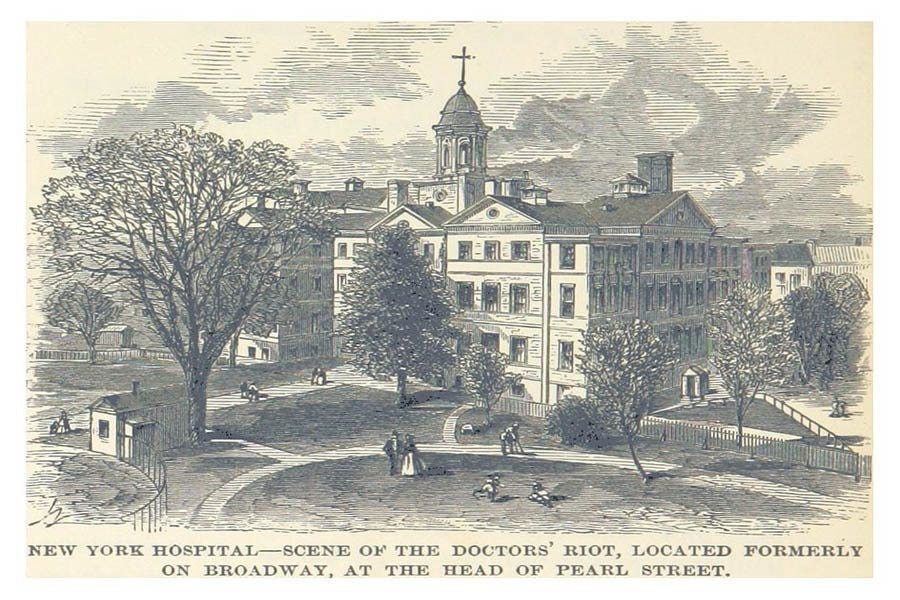
1873 illustration of the location of the Doctors’ Riot in 1788, New York Hospital. Image Source: Wikimedia Commons
In the spring of 1788, a group of young boys were playing behind the New York Hospital, at that time located at Broadway and Pearl Street. A medical student named John Hicks was working with a stolen corpse, and decided to stick the arm he was dissecting out the window and wave it at the children below.
Hicks told one of the children that it was the arm of his recently deceased mother, a claim the boy believed after climbing a ladder to get a closer look. The boy immediately ran home to tell his father, who, upon opening his wife’s coffin, discovered that her body had been stolen (a practice that occurred with some regularity among medical students, as at the time it was considered taboo to “violate” corpses).
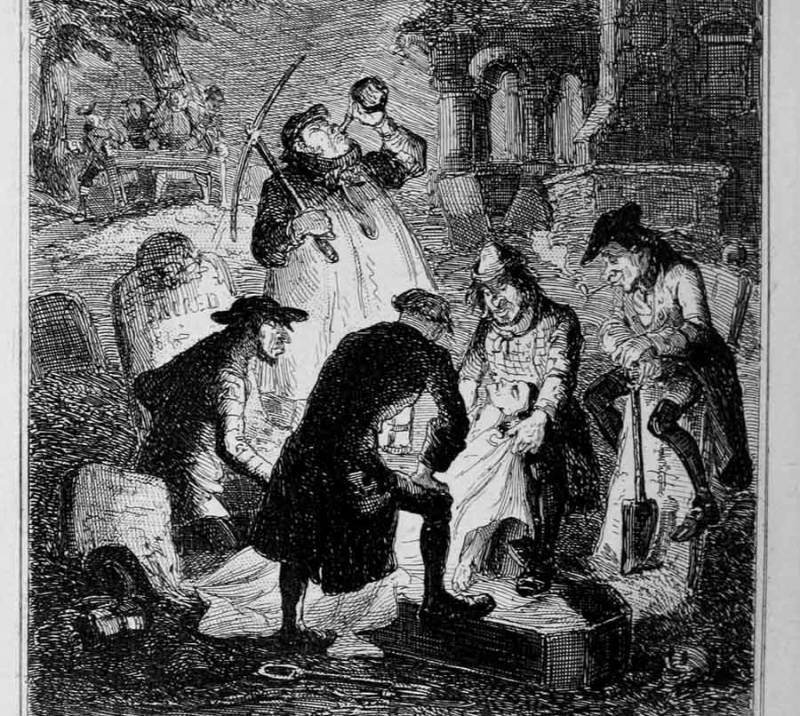
“Resurrection Men” were grave robbers hired by doctors and medical students to procure cadavers for use in medical training and experimentation.
The boy’s father quickly gathered a large group of concerned citizens, who went to confront the surgeons at the hospital, eventually breaking in and finding countless corpses in various states of mutilation. Upon finding out that these bodies were stolen from burial grounds outside the city, the enraged citizens dragged the medical students into the streets.
Here, they encountered the Mayor of New York City, James Duane, who had the medical students locked up — but only for means of their own protection.
As word spread of what had been seen inside the hospital, a crowd of approximately 2,000 people rioted and headed to the courthouse in an attempt to find medical student John Hicks and make him pay for his behavior. The rioters threw rocks at the courthouse — as well as the cavalry and militia who had gathered to suppress the crowd. At least six people were killed in the clash, with some estimates claiming the death total may have been as high as 20.
2. The Riot Over Exploding Disco Records
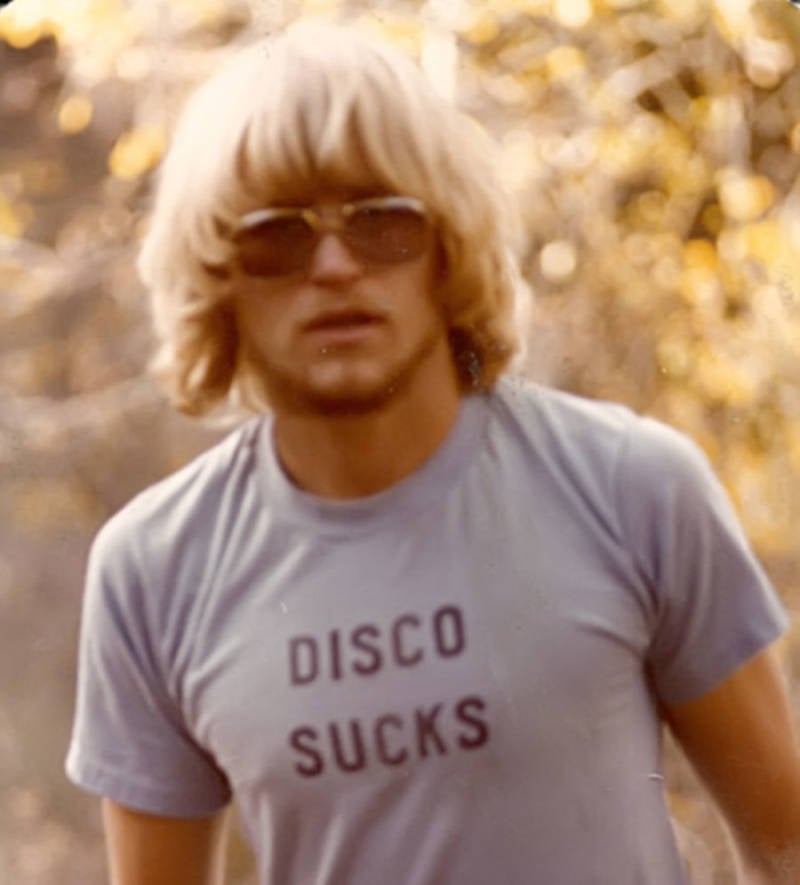
More than 10,000 men gathered in Times Square wearing their ‘Boaters’ in July of 1921. Wearing these hats on September 13th, 1922 would lead to the Straw Hat Riot.Image Source: Wikimedia Commons
In July 1979, what could possibly be deemed the worst promotional event in sports history took place at the White Sox’s Comiskey Park in Chicago. Disco was nearing the end of its run as the dominant music of the decade, and the anti-disco backlash had begun in full force.
That is where Chicago radio deejay Steve Dahl enters the scene. Dahl and his listeners believed that disco music was a threat to their beloved rock and roll, and with the help of Mike Veeck (the son of then White Sox owner Bill Veeck) hatched the idea of blowing up a bin of disco records in the outfield between a doubleheader against the Detroit Tigers.
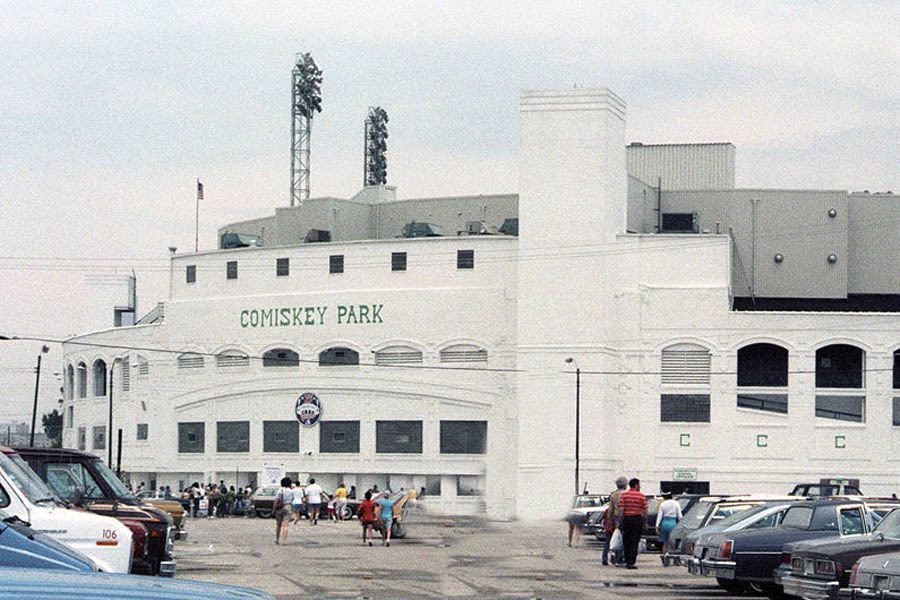
Comiskey Park, Chicago; home of the Chicago White Sox and venue for Disco Demolition Night.
If fans brought a disco record with them for the “Disco Sucks” demonstration, Dahl made it such that they’d receive reduced entry. The promotion — coupled with Dahl’s listeners — made for a massive turnout: tens of thousands of people piled into the stadium, more than anyone anticipated.
Right from the beginning, the crowd seemed agitated, and the alcohol consumed during the game only added to their bellicosity. Alan Trammell, the Tigers’ shortstop at the time, said, “I remember from the get-go, it wasn’t a normal crowd.”
Even after the gates had been closed, thousands more baseball fans (and disco haters) continued to sneak into the ballpark — many of whom had vinyl in hand that had not been collected by promotion staff. These soon became flying projectiles, being hurled onto the field like Frisbees.
When Dahl did finally blow up the pile of albums in the field as promised, the mob rushed the field in a frenzied wave — destroying much of it by ripping out the pitching rubber, the bases, and even home plate.
The rioters did not disperse until police showed up on the field in full riot gear. The 39 people who still refused to leave the field were arrested, and the second game postponed. An hour of cleanup couldn’t make the field playable, so the Tigers won by default.
3. The Riot Over Bread (And Beef, Bacon, And Jewelry)

Image Source: Wikimedia Commons
On April 2, 1863, hundreds of hungry women gathered outside of the Richmond, Virginia Capitol building in protest over the sharply rising costs of bread and other food — due to the war, inflation, drought and expensive complementary goods like salt.
Taking place in the thick of the Civil War, the women’s intent was to demand bread and justice from Governor John Letcher, who only stoked the ire of the starving when he sent an aide to inform the crowd that he was too busy to see them. When Governor Letcher did finally appear to face the growing group of protesters, he dismissed their demands, causing full-fledged fury — a fury that escalated quickly, since the crowd was armed.
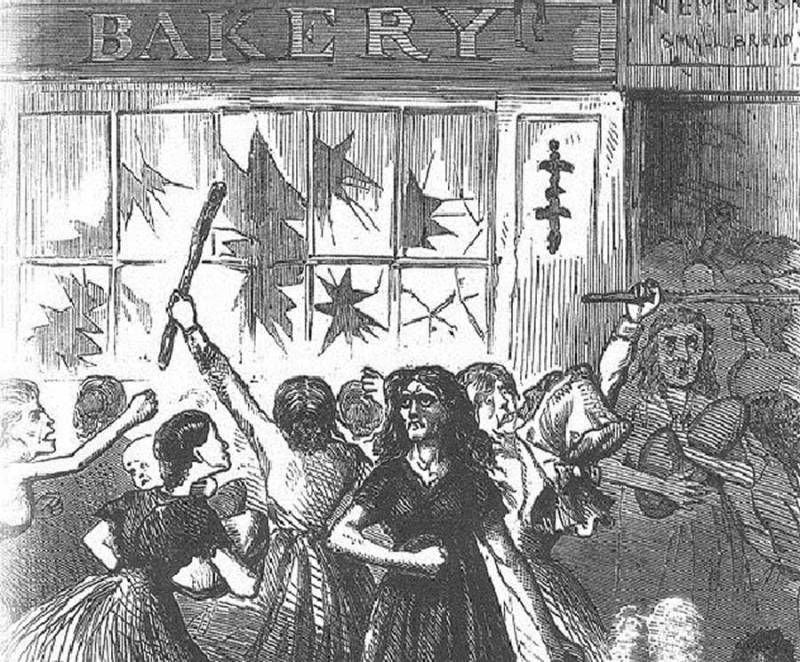
A depiction of the bread riot. Image Source: Wikimedia Commons
Protestors made their way to the market district and began breaking into the stores with axes, smashing windows and looting the contents. In addition to 500 lbs. of bacon and a wagon full of beef, the women also stole jewelry, clothing and hats from the local shops — all the while yelling, “Bread or blood!”
Confederate President Jefferson Davis finally arrived on the scene in an attempt to defuse the situation, throwing money from his pockets and saying “Here, this is all I have.” The protestors stayed, and it was only when Davis threatened to command guards to fire their weapons into the unhinged crowd that the rioters disbanded. Later, several of the protesters were rounded up and put in jail, but were soon released when it became evident that there wasn’t enough food to feed them.
4. The Riot Over Straw Hats
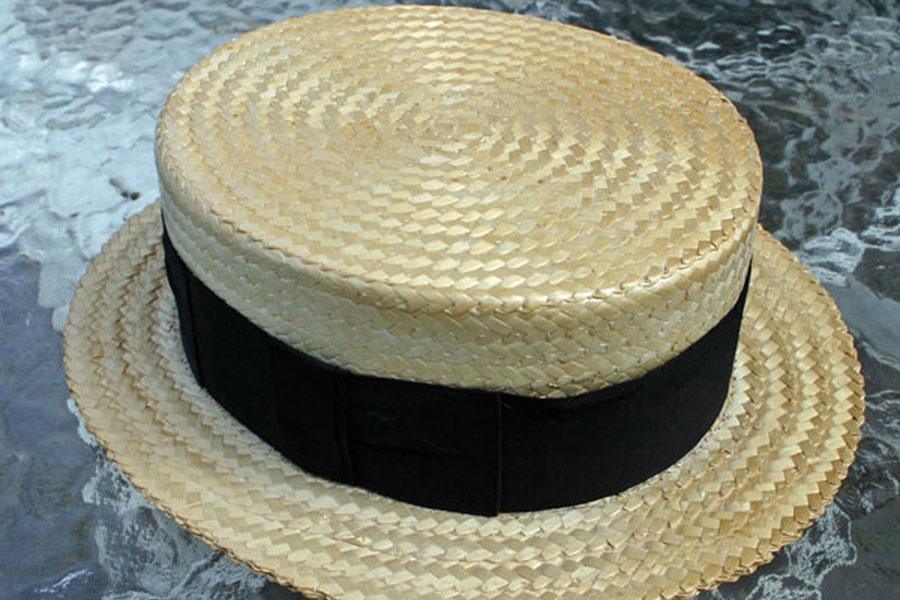
Image Source: Wikimedia Commons
In 1922, fashion rules were taken a little more seriously than they are today. Somewhere along the line it had become a fashion faux-pas to wear straw hats (known as boaters) after September 15th. Much like the no-white after Labor Day rule, it was no joking matter at the rule’s inception.
Young delinquents would enforce this unwritten code by knocking the straw hats from the heads of men who wore them past the stated date, and would proceed to stomp the hats flat in the road afterward. The rowdy act was so prevalent that newspapers began to print warning stories each year as the September 15th date approached.
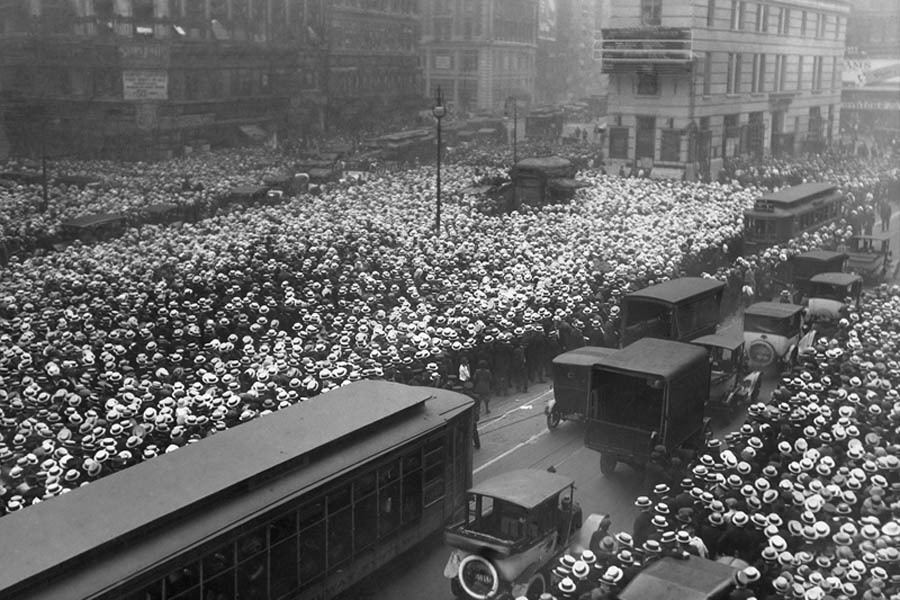
More than 10,000 men gathered in Times Square to receive updates on a boxing match while wearing their “Boaters” in July of 1921. Wearing these hats on September 13th, 1922 would lead to the Straw Hat Riot. Image Source: Wikimedia Commons
Undeterred, the hat smashers still enforced the ban — this time a few days before the stated deadline. On September 13th, 1922, the troublemakers began knocking off and stomping the straw hats of factory workers in the Mulberry Bend area of Manhattan, before moving on to torment the local dockworkers. Unlike the factory workers, however, the dockworkers were quick to fight back.
A brawl between the young pranksters and the dockworkers soon erupted, spilling out onto the Manhattan Bridge, where it eventually stopped traffic. Though police arrived to make break things up, this was not the end of the debacle.
The next night, the hat smashers arrived in even greater numbers, now armed with large sticks (some even had a nail hammered through the top). They roamed the streets of New York, looking for men wearing straw hats, beating anyone who resisted or fought back.
Even though several off-duty police officers were among the victims, active police were slow to react. By the time things were brought to an end, several men were hospitalized with the injuries they sustained during the beatings.
5. The Riot Over Wigs (That Started A War)
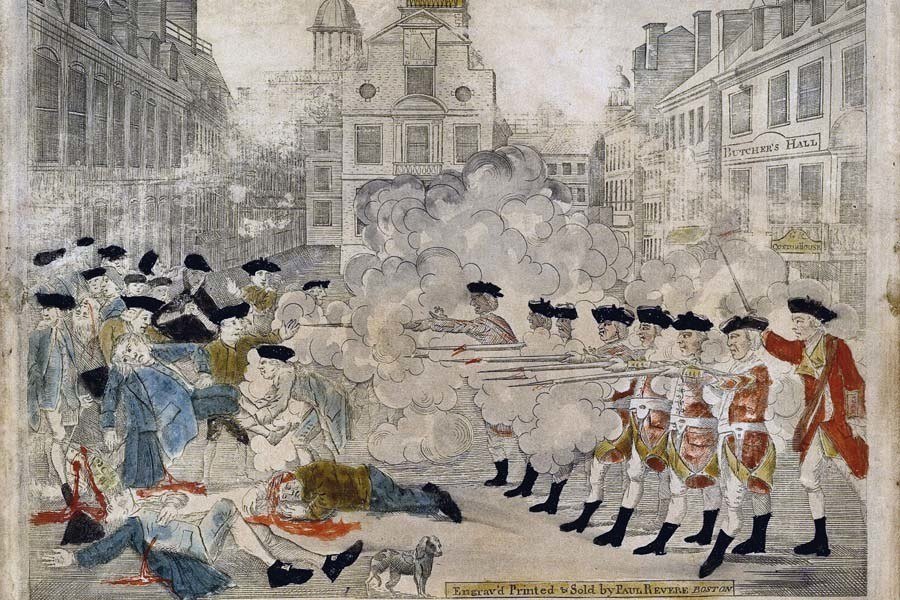
Paul Revere’s engraving of the night of the Boston Massacre was distributed throughout the American colonies, and helped garner support against the British troops. Image Source: Wikimedia Commons
Just because a riot begins under strange circumstances doesn’t mean that it can’t inspire massive change.
On March 5th, 1770, tensions were running high in the Massachusetts colony town of Boston. When apprentice wig maker Edward Gerrish began harassing British Captain Lieutenant John Goldfinch about not paying for his wig, another soldier hit the young apprentice from behind with his rifle, knocking him to the ground.
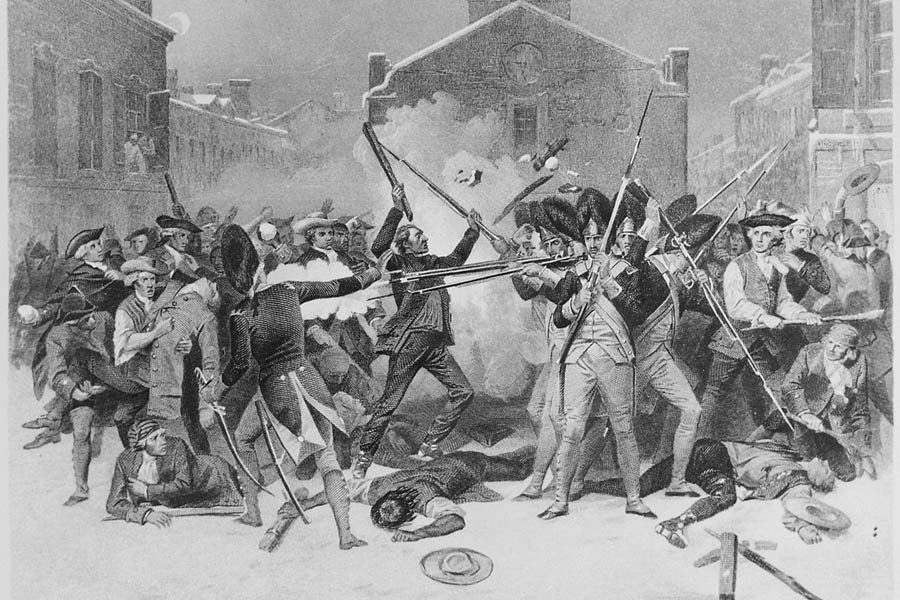
The Boston Massacre is credited as beginning the Revolutionary War. The incident is also known as the Wig Riot. Image Source: Wikimedia Commons
Gerrish promptly got up and rallied his friends to surround the Customs House in Boston. The American colonists, who called themselves Patriots, began throwing snowballs and other objects at the British guards stationed outside, hitting Private Hugh Montgomery and causing his firearm to discharge. This caused the other soldiers to began firing, and within moments five rioters were left dead and three more were injured.
Crispus Attucks, Patrick Carr, Samuel Gray, Samuel Maverick, and James Caldwell lost their lives over a misunderstanding about the bill for a wig. This event is popularly known as the Boston Massacre, and was the conflict that produced the first five casualties of the American Revolutionary War.


